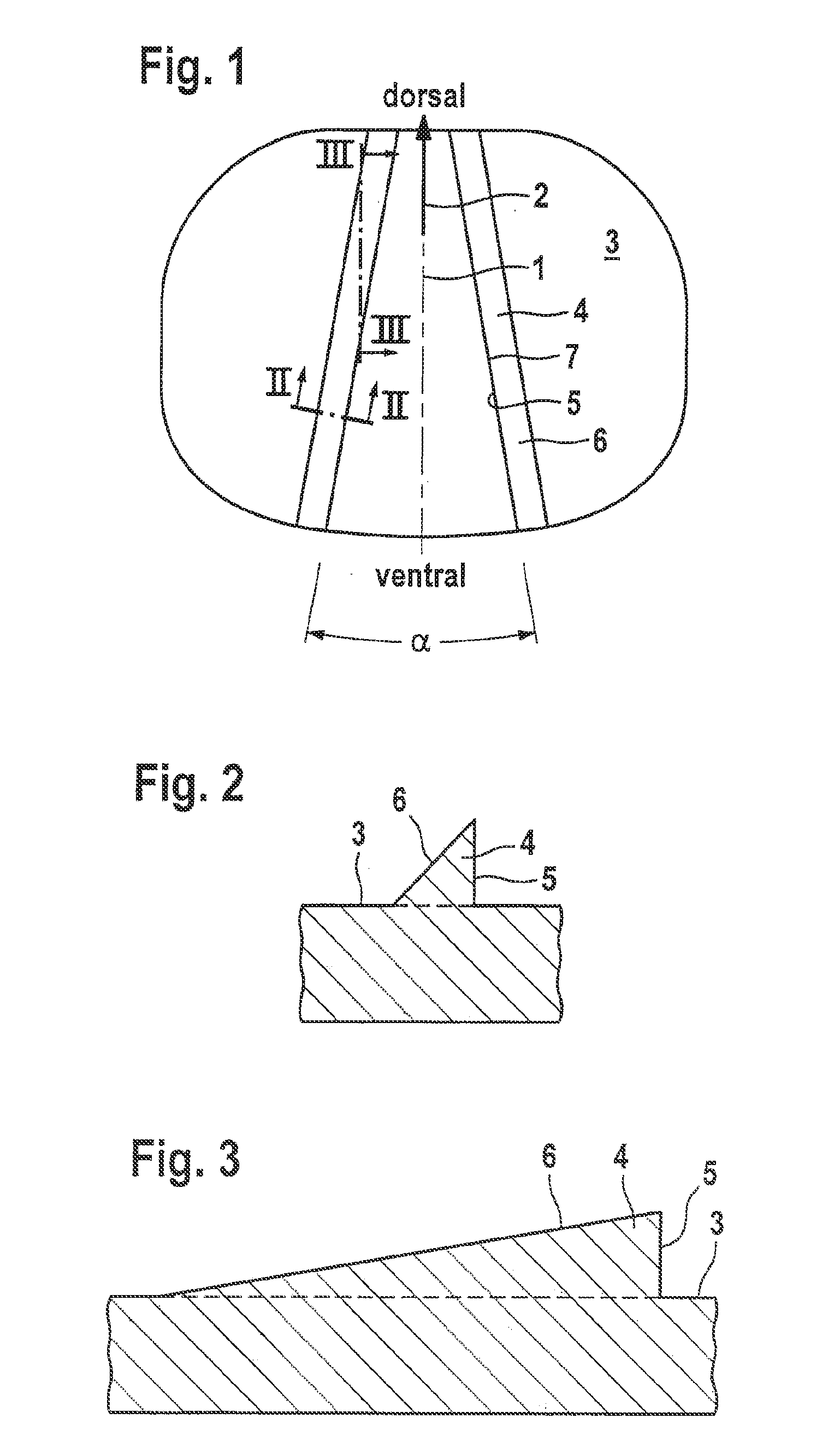Intervertebral prosthesis with self-tapping fixing projections
a technology of fixing projections and intervertebral prostheses, which is applied in the field of intervertebral prosthesis with self-tapping fixing projections, can solve the problems of inability to work the cover plate of the cervical spine, inability to operate with a large amount, and inability to achieve the work of the cervical spin
- Summary
- Abstract
- Description
- Claims
- Application Information
AI Technical Summary
Benefits of technology
Problems solved by technology
Method used
Image
Examples
Embodiment Construction
[0028]FIG. 1 shows the view of the attachment surface of an attachment plate of the prosthesis which is symmetrical with respect to the median plane 1. Its adaptation to the shape of the intervertebral space means that it has a predetermined ventral face and dorsal face. The implantation direction is also predetermined and, in the examples shown, is the direction 2 leading from ventral to dorsal.
[0029]The attachment surface includes a base surface 3 which is intended to bear on the bone as far as possible across its entire surface area and can be provided with a surface structure permitting an intimate connection by means of bone tissue growing in pores or other recesses. The base surface surrounds two ribs 4 which are arranged symmetrically with respect to the median plane 1 and enclose an angle alpha of approximately 20°. Their more ventrally oriented side face 5 is steep, namely approximately 90° to the base surface 3, and the more dorsally oriented side face 6 running parallel t...
PUM
 Login to View More
Login to View More Abstract
Description
Claims
Application Information
 Login to View More
Login to View More - R&D
- Intellectual Property
- Life Sciences
- Materials
- Tech Scout
- Unparalleled Data Quality
- Higher Quality Content
- 60% Fewer Hallucinations
Browse by: Latest US Patents, China's latest patents, Technical Efficacy Thesaurus, Application Domain, Technology Topic, Popular Technical Reports.
© 2025 PatSnap. All rights reserved.Legal|Privacy policy|Modern Slavery Act Transparency Statement|Sitemap|About US| Contact US: help@patsnap.com



